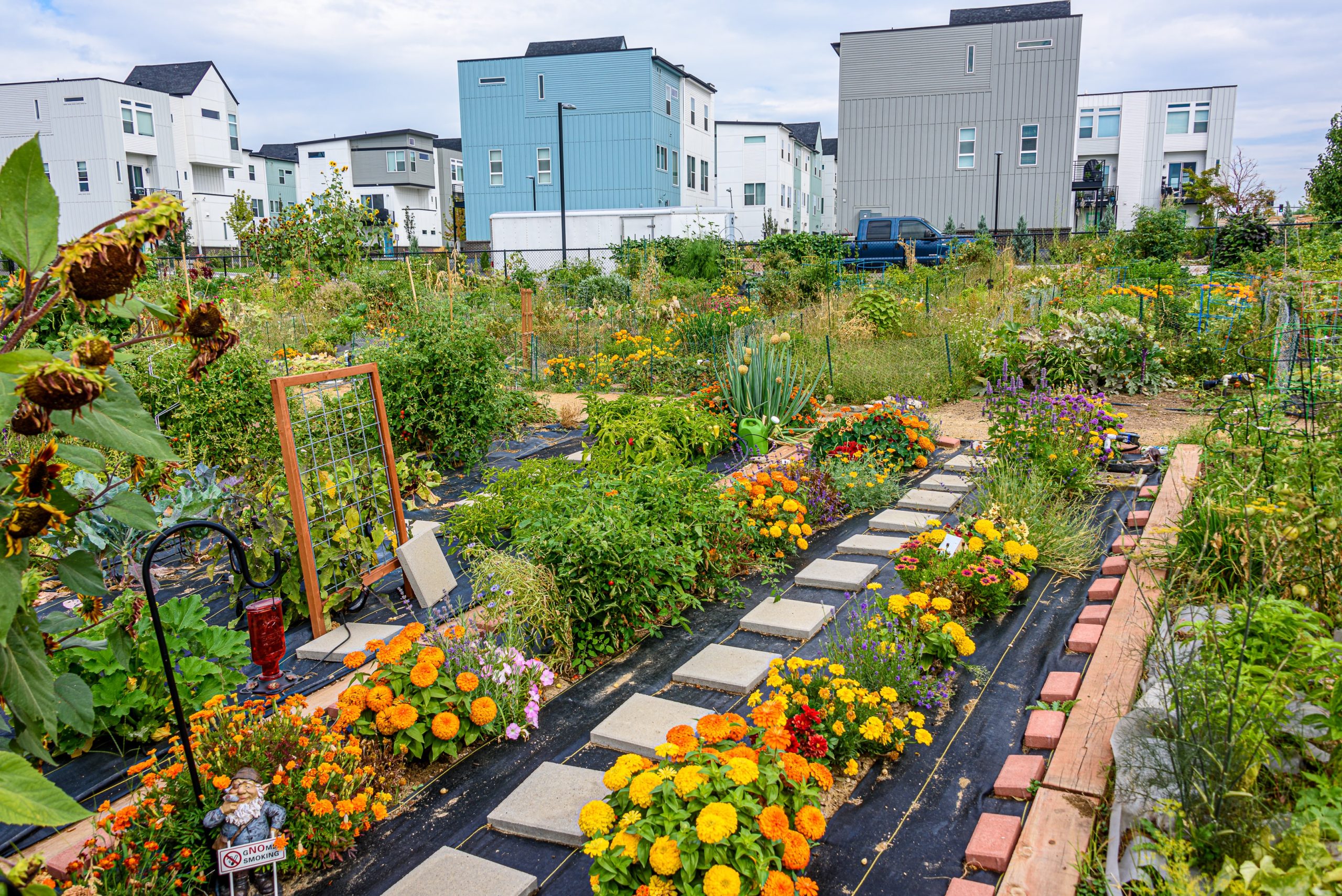Community-Directed Strategies for Sustainability
Due to several distinguishing factors, sustainability interventions directed at the community-level are an asset for reconnecting with nature. For one, implementing interventions within a community shifts the focus beyond the individual and plays to the strengths of collective action. As community-based interventions often require the combined efforts of multiple players, working with communities generates opportunities for collaboration, whether that be between various stakeholders, sectors, or generations. Accordingly, engagement at the community level necessitates interventions built on meaningful relationships. Because communities are unique, interventions should meet context-specific needs identified through community input. The following section will discuss how community gardens, park prescriptions, and ecosystem-based planning serve as practical strategies for reconnecting communities with the natural world.
Community Gardens
During the First and Second World Wars, community gardens emerged throughout Europe and North America to relieve pressure from food shortages and maintain food security.75 Today, they represent shared spaces where people can grow diverse produce and re-engage with nature in a meaningful way. Community gardens can take many forms, such as allotment gardens where plots are divided for personal care or collectively managed gardens with a shared harvest.76 Existing research supports the range of positive health and well-being outcomes that community gardens bring to the table, including improved nutrition, food security, community cohesion, mental health benefits, and environmental activism, to name a few.75,76 We will draw particular attention to the positive impacts of community gardens in facilitating connectedness with the natural environment.
Due to rapid urbanization over recent centuries, our relationship with nature has been severed as access to green space has become increasingly reduced.77 It is suggested that this expansion of built environments and modern lifestyle changes have led people to forget the interdependence between humans and natural ecosystems. Community gardens provide a means to re-incorporate nature into our everyday routines, especially within metropolitan contexts. Beyond providing a physical arena for reconnecting with nature, community gardens create spaces for environmental learning. In a study by Bendt et al., public-access community gardens were found to engage study participants in four learning streams: 1) learning about gardening and local ecological conditions, 2) learning about the politics of space, 3) learning about self-organization, and 4) learning about social entrepreneurship.77 Furthermore, community gardens serve as an experiential interface for co-creation between human and natural forces to instil a sense of connection to growing food.78 As previously discussed, close connectedness to nature is a precursor of sustainability behaviours.70

Case Study: Alex Wilson Community Garden
The Alex Wilson Community Garden in Toronto, Canada opened in June 1998 to commemorate the life of Alex Wilson, a Canadian writer, landscape designer, and community activist.79 Located in the heart of a diverse urban neighbourhood, the garden was created to embody Wilson’s passion for nurturing relationships between people, communities, and the natural environment by integrating community gardening with ecological restoration. It’s design elements capture southern Ontario’s regional terrain highlighting lakeshore, agricultural, and forest landscapes. The garden also serves the social needs of its community by providing opportunities for collaborative food production, a non-profit housing complex, and a drop-in centre for those experiencing homelessness. As a reflection of Wilson’s work, the garden contributes to restoring the severed connection between our built and natural environment while paving the way for further sustainability efforts.
“We must build landscapes that heal, connect and empower, that make intelligible our relations with each other and the natural world.”
– The Culture of Nature (1992), by Alex Wilson80
Nature Prescription Programs
Nature prescription programs have emerged within the last 25 years to improve community health and promote environmental stewardship.81 These programs involve providing patients with formal prescriptions for outdoor activities written explicitly by a physician or healthcare provider.82 Typically, nature prescriptions come in two forms, either structured or unstructured. While structured prescriptions direct patients to participate in a specific outdoor activity (outdoor sports, organized games, walks, etc.), unstructured prescriptions refer patients to spend time more generally in an outdoor location like a community park or local green space. There is growing evidence supporting the physical, mental, and social benefits of nature prescriptions; however, advancements in evaluation methods are needed for existing nature prescription programs on issues such as patient adherence, improved health outcomes, best clinical practices, and overall effectiveness.82,83
Despite these research gaps, the prevalence of nature prescription programs is expanding throughout the globe as driven by a growing body of literature revealing the health benefits of reconnecting with nature.82
Physicians should consider adopting nature prescription programs for patients as part of their process of care
Case Study: PaRx
First launched in November 2020, PaRx is Canada’s first national, evidence-based nature prescription program led by Dr. Melissa Lem in partnership with the BC Parks Foundation.84 They have established a program in which licensed healthcare professionals can register with PaRx to receive guides and patient resources for filling nature prescriptions.46 Currently, PaRx operates throughout British Columbia, Manitoba, Saskatchewan, and Ontario in commitment to advancing patient and planetary health. One of the program’s most important goals is to promote nature’s health benefits for adults, children, and the planet with particular emphasis on strengthening our connection with nature to reinforce sustainability behaviours. To advance this movement, their program includes a free Parks Canada Discovery Pass (valued at $72) providing unlimited admission to national parks and conservation sites.85 As a standard recommendation, patients are directed to spend at least 2 hours a week in nature for at least 20 minutes each outing.

